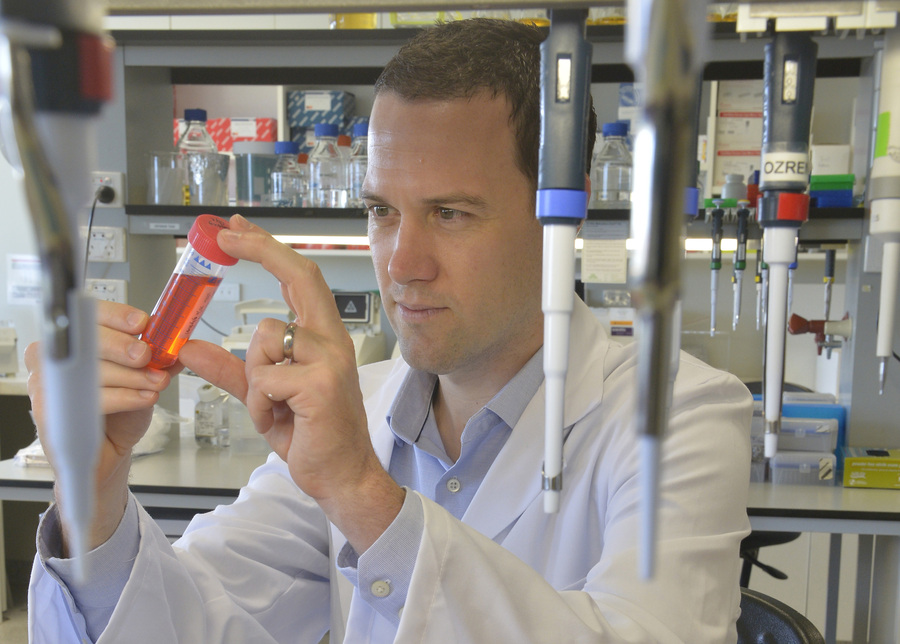Written by Michelle Wheeler. Originally published by Particle.
As a teenager, UWA’s Professor Ryan Lister read a book that would inspire his lifelong fascination with genetics.
It was Michael Crichton’s Jurassic Park.
He was amazed that the instructions to create the diversity of life on Earth – from the dinosaurs in the story to trees and humans – could be found in DNA.
Today, Ryan is a pioneer in epigenomics – the molecular code that determines which regions of our genes are expressed at any given time.
It’s what makes a skin cell different to a brain cell, even though they have the same underlying DNA.
Filing it away
Humans, like other organisms, start as a single cell.
But we become hugely complex creatures with hundreds of distinct cell types from neurons to kidney cells and blood cells.
Ryan says this specialisation happens through each cell type turning on or off different combinations of the genes.
He says our genome has additional layers of chemical information added to it, known as the epigenome, that can control whether a cell can access the DNA sequence.
The patterns of where these chemical tags are located in the genome is different in each distinct type of cell.
“These millions of chemical tags can instruct the cell to wrap that piece of DNA up really tight around proteins so that it doesn’t get accessed,” Ryan says.
“It’s filed away.”
Removing these modifications can open up a region of DNA, allowing proteins to be produced and go on and do the work in the cell.
Ryan likens the genes in our genome to piano keys.
“You have the fixed keys of the piano, they don’t change,” he says.
“But the way you play them can be changed … and this creates unique songs.”
“The epigenome is like the sheet music that instructs us which keys we should play and how to play them.”
Crichton’s lab bench
Ryan is internationally recognised for generating the first complete map of the human epigenome.
The work was rated by TIME magazine as the second most important scientific discovery of 2009.
Ryan’s lab bench at the time – at the Salk Institute in the United States – had, in fact, belonged to Michael Crichton years earlier. The author studied viruses as a postdoc at the institute before writing his techno-thriller novel The Andromeda Strain.
Ryan’s research has since found applications in fields ranging from agriculture to human health.
His discoveries have been used in dozens of patents, including prenatal testing, cancer detection and regenerative medicine technologies.
It sees Ryan work across both the ARC Centre of Excellence in Plant Energy Biology and the Harry Perkins Institute of Medical Research.
(Luckily, he’s a good office mate. Ryan must have the cleanest office of any scientist in WA, almost completely bare aside from a jungle of indoor plants.)
A 30,000-letter stretch of RNA
Ryan says we’re in the midst of an enormous transition in the history of life.
“No other creature has come before us that is able to begin to understand the fundamental molecular basis of its own existence and all the other creatures around it,” he says.
We’re also able to deliberately modify our own cells, with technologies such as cancer immunotherapy.
“This is really something that’s never happened on our planet before,” Ryan says.
“I think it’s amazing and a very exciting area of work to be involved in.”
Ryan says being able to understand and control aspects of biology is critical for the world we live in today.
He points to the impact of a 30,000-letter stretch of RNA – SARS-CoV-2 – adapting to the “increasingly dire challenges of climate change” and alleviating disease as areas that could benefit from rapid advances in genomics.
Perhaps one day we’ll even bring back dinosaurs.
This article was originally published on Particle. Read the original article.

